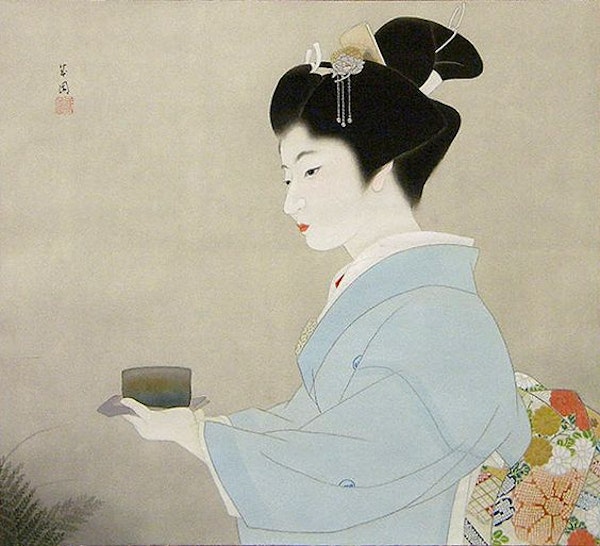The origin of the word bijin (美人 – beautiful woman)
“I met a beauty today” generally means the speaker encountered a beautiful woman. The Japanese talk about meeting a bijin, literally “beauty-person”, but it is actually used exclusively for beauties of the female persuasion.
In the old days, a bijin had a special job reserved just for her. Early written records indicate that villagers used to do their sake-making through a primitive fermentation process that began with chewing rice and spitting the wad into a large wooden tub. The purity of the sake was ensured by allowing the rice to be chewed only by bijin – in this case, the young virgins. The resulting wine was appropriately called bijinshu, or “beauty sake”.
Beautiful women are believed to suffer misfortunes and even untimely death. As a common proverb puts it, “Beauties are short-lived” (美人薄命―Bijin hakumei). It also hints at the impermanence of youthful prettiness and the fact that Japanese tend to perceive transience itself as beautiful. The national passion for cherry blossoms is partly based on the fact that they fade so quickly.
Source: Kittredge Cherry, “Womansword: What Japanese Words Say About Women”, Kodansha International, Tokyo and New York: 1987
Image: Nihonga style painting, by Shima Seien (1892-1970)
“I met a beauty today” generally means the speaker encountered a beautiful woman. The Japanese talk about meeting a bijin, literally “beauty-person”, but it is actually used exclusively for beauties of the female persuasion.
In the old days, a bijin had a special job reserved just for her. Early written records indicate that villagers used to do their sake-making through a primitive fermentation process that began with chewing rice and spitting the wad into a large wooden tub. The purity of the sake was ensured by allowing the rice to be chewed only by bijin – in this case, the young virgins. The resulting wine was appropriately called bijinshu, or “beauty sake”.
Beautiful women are believed to suffer misfortunes and even untimely death. As a common proverb puts it, “Beauties are short-lived” (美人薄命―Bijin hakumei). It also hints at the impermanence of youthful prettiness and the fact that Japanese tend to perceive transience itself as beautiful. The national passion for cherry blossoms is partly based on the fact that they fade so quickly.
Source: Kittredge Cherry, “Womansword: What Japanese Words Say About Women”, Kodansha International, Tokyo and New York: 1987
Image: Nihonga style painting, by Shima Seien (1892-1970)

